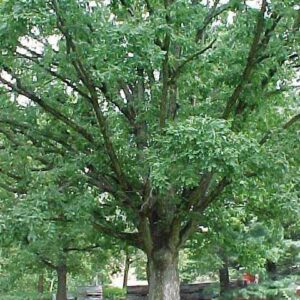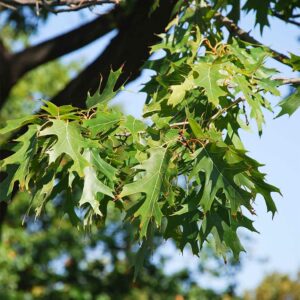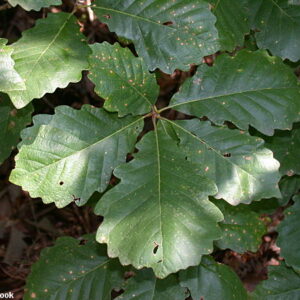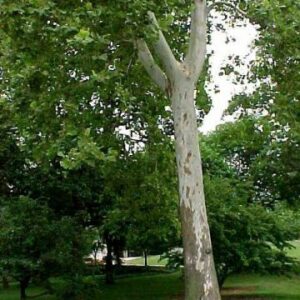Description
Type: Deciduous tree
Family: Fagaceae
Height: 40-60 feet
Spread: 40-60 feet
Native Range: Central and southern US, in Missouri mostly in Mississippi river valley
Ideal Site Requirements:
Soil: acidic, moist to wet loams
Water: medium to wet
Sunlight needs: Full sun
Tolerates: Erosion, clay soil, wet soil
Landscape use: Shade tree
Brief Description: Medium sized tree with straight trunk and broad rounded crown. Slightly shaggy bark similar to white oak. Acorn cup encloses ⅔ to almost the entire nut, hence the common name. Can have good orange or red fall color.
Wildlife Benefits: Acorns are an important food source for wildlife.
Possible Problems: No serious insect or disease problems. Oaks in general are susceptible to a large number of diseases, including oak wilt, chestnut blight, shoestring root rot, anthracnose, oak leaf blister, cankers, leaf spots and powdery mildew. Potential insect pests include scale, oak skeletonizer, leaf miner, galls, oak lace bugs, borers, caterpillars and nut weevils.
Stand out Features: Good shade tree for low-lying, wet areas, some specimens have good fall color.
Read more here.
Additional information
| Common Name | overcup oak |
|---|---|
| Scientific Name | Quercus lyrata |
| Native Range | Central and southern United States |
| Zone | 5 to 9 |
| Height | 40.00 to 60.00 feet |
| Spread | 40.00 to 60.00 feet |
| Bloom Time | March to April |
| Bloom Description | Yellow catkins (male); Red spikes (female) |
| Sun | Full sun |
| Water | Medium to wet |
| Maintenance | Low |
| Suggested Use | Shade Tree |
| Flower | Insignificant |
| Fruit | Showy |
| Tolerate | Erosion, Clay Soil, Wet Soil |
| Leaf | Good Fall |





